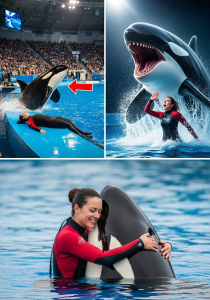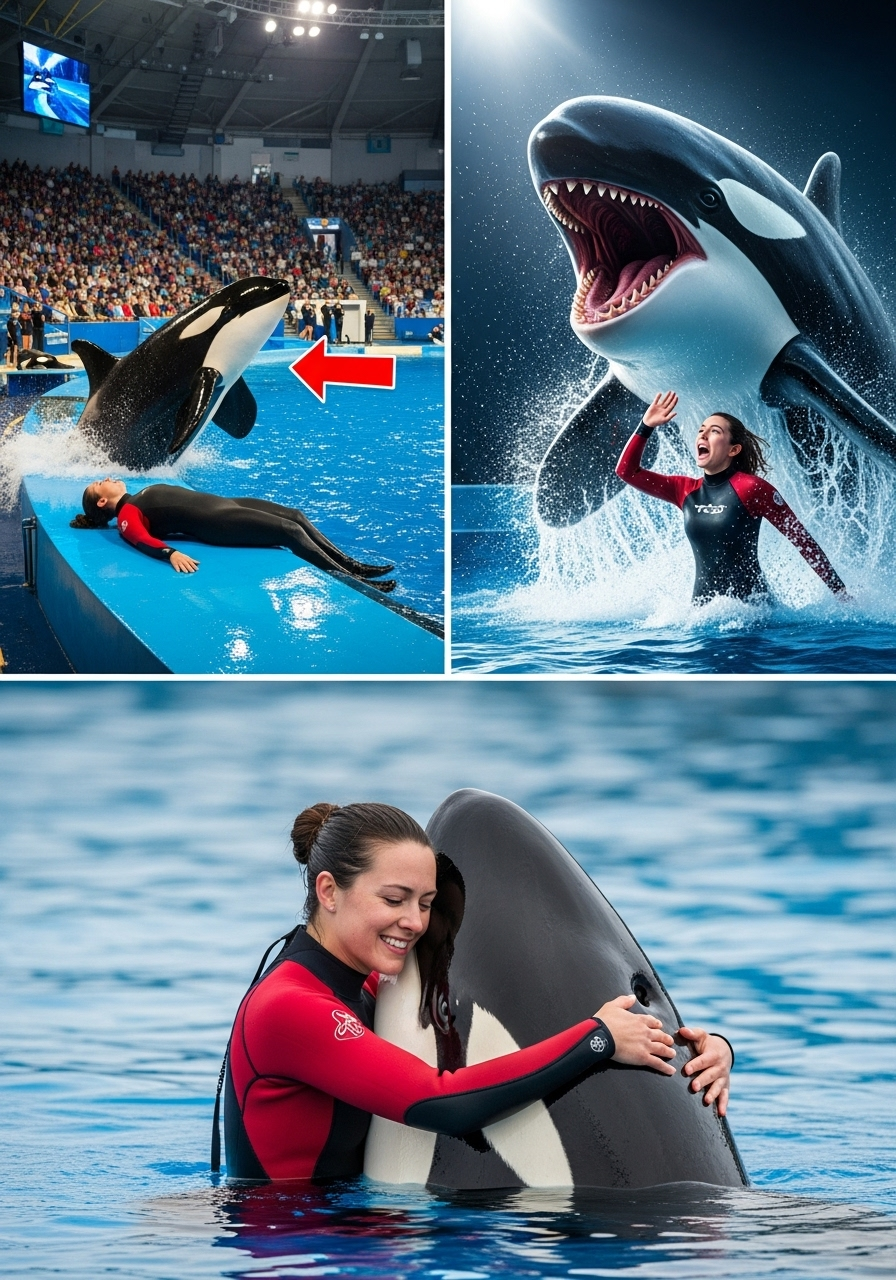From Fairy Tale to Nightmare: The Moment a Dolphin Encounter Turned Bloody

The scene is one of pure, unadulterated joy. A child, her eyes wide with wonder, leans over the edge of a pristine blue pool. Below, a sleek, smiling dolphin glides through the water, a creature of myth and magic brought to life. It’s a fairy tale moment, a memory in the making. She reaches out, her small hand offered in a gesture of innocent connection. But in a horrifying flash, the dream shatters. The water, once a tranquil blue, is suddenly tinged with red. The joyful squeals of the crowd die in their throats, replaced by a stunned, horrified silence.
This isn’t a scene from a horror movie. It’s a scenario that has played out in shocking reality at marine parks, a stark reminder that behind the carefully choreographed shows and the veneer of family-friendly entertainment lies the unpredictable nature of a wild animal.
One such incident involved an 8-year-old girl named Jillian Thomas at a popular marine park’s dolphin-feeding attraction.[1][2] In what was supposed to be a highlight of her visit, Jillian was feeding dolphins when one of the animals lunged, biting her hand and momentarily pulling her towards the water.[1][2] The attack left her with three puncture wounds and a terrifying memory etched into her childhood.[1] Her father, who captured the incident on video, described his initial reaction as “instant fear,” believing for a heart-stopping moment that he might have to jump into the tank to save his daughter.[1][2]
These events, while shocking to the public, are a known risk within the industry. In fact, many tourist venues that offer close-contact interactions with dolphins have liability release forms that highlight the potential for injury or even death.[3] Dolphins, despite their seemingly perpetual “smile,” are powerful predators capable of inflicting serious harm.[3][4] Injuries reported from such encounters include lacerations, broken bones, and other serious physical trauma.[3][5]
Animal welfare experts argue that the stress of captivity is a significant contributing factor to these aggressive outbursts.[5] Confined to small, often chlorinated pools, these intelligent and social creatures are a world away from their natural ocean environment where they would swim vast distances daily.[6] The unnatural setting can lead to a host of stress-related behaviors and health issues, including ulcers and a compromised immune system.[5][7] The very interactions that are marketed as “magical” can be a source of significant stress for the animals.
In another harrowing incident, a 10-year-old British girl was attacked by two dolphins during a “swimming with dolphins” experience in Cancun, Mexico.[3] The animals reportedly dragged her underwater, leaving her with cuts, bruises, and bite marks.[3] Even highly trained professionals are not immune. In 2022, a trainer at the Miami Seaquarium was viciously attacked by a dolphin during a show, an incident that was also caught on video.[8] A former veterinarian at the facility alleged that this was not an isolated incident and that the dolphin had a history of aggression.[9]
These shocking events serve as a stark wake-up call. The fairy tale image of the friendly, playful dolphin eager to interact with humans is often a carefully constructed illusion. The reality is that these are complex wild animals, and the consequences of forgetting that can be devastating. As one mother of a bitten child aptly put it, “Everyone just imagines dolphins as smiling, non-biting animals… You forget these are wild animals.”[2]
The silence that falls over an aquarium after an attack is more than just shock; it’s the sound of a fantasy colliding with a harsh and bloody reality. It’s a moment that should force us all to question the true price of these “magical” encounters.



